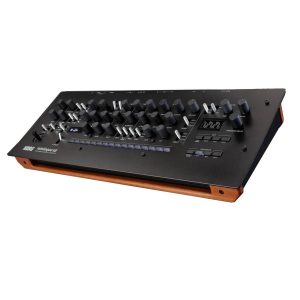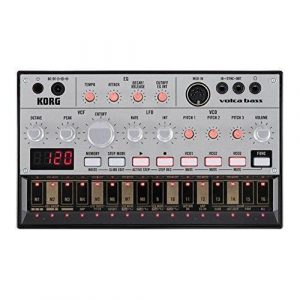Description
Behringer Monopoly Synthesizer: An Overview
Behringer, the German manufacturer of music equipment, has recently released a new synthesizer called the Behringer Monopoly Synthesizer. This synth is a tribute to the classic and iconic Korg Monopoly synthesizer from the 1980s. The Behringer Monopoly Synthesizer is a modern take on the original, with added features and better sound quality. In this article, we will take a closer look at this new synth and what it has to offer.
Design and Features
The Behringer Monopoly Synthesizer has a classic look, with its black and silver finish and retro design. The synth is built with high-quality materials and has a solid feel to it. The front panel is packed with features, including four VCOs, a 24dB/octave low-pass filter, and an arpeggiator. There are also a variety of modulation options, including an LFO, two ADSR envelopes, and a sample and hold circuit.
One of the most exciting features of the Behringer Monopoly Synthesizer is its polyphonic mode. The synth can play up to four notes at a time, giving you the ability to create complex and layered sounds. There is also a unison mode, which allows you to stack up to four voices for a thicker and more powerful sound.
Sound Quality
The Behringer Monopoly Synthesizer is capable of producing a wide range of sounds, from warm and mellow to aggressive and punchy. The VCOs are rich and full, and the filter is smooth and organic. The synth also has a built-in distortion circuit, which can add grit and edge to your sounds.
The Behringer Monopoly Synthesizer also includes a number of effects, including reverb, delay, chorus, and flanger. These effects are easy to use and can help you shape your sound to perfection.
Conclusion
Overall, the Behringer Monopoly Synthesizer is a great choice for anyone looking for a high-quality analogue synth. It is versatile, powerful, and highly affordable. The synth has a classic sound and design, but with modern features that make it a great tool for music production. Whether you are a beginner or an experienced musician, the Behringer Monopoly Synthesizer is definitely worth considering. So, if you want to get your hands on a synth that will provide you with endless hours of creative inspiration, then the Behringer Monopoly Synth is an excellent choice.
Behringer Monopoly properties
| Product name | Behringer Monopoly |
| Brand | Behringer |
| Type | Synthesizers |
| Keys | Yes |
| Number of Keys | 37 pcs |
| Drawbars/Sliders | No |
| Pads | No |
| Rotary Controls | Yes |
| Modulation Wheel | Yes |
| Pre-Programmed Rythms | No |
| Pre-Programmed Songs | No |
| Pre-Programmed Sounds | Yes |
| Pre-Programmed Drumset | No |
| Pre-Programmed Effects | Yes |
| Built-In Tuner | No |
| Portable | Yes |
| Speakers | No |
| Connections | 3.5mm (AUX), 6.3mm (1/4″RTS), Headphone, Keyboard Pedal, MIDI, MIDI Through USB, USB |
| Colour | Blue |
| Power Supply | Electrical Cable to Wall Socket |








Reviews
There are no reviews yet.